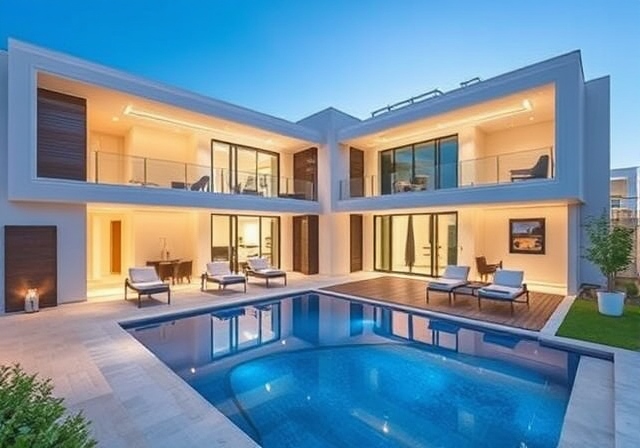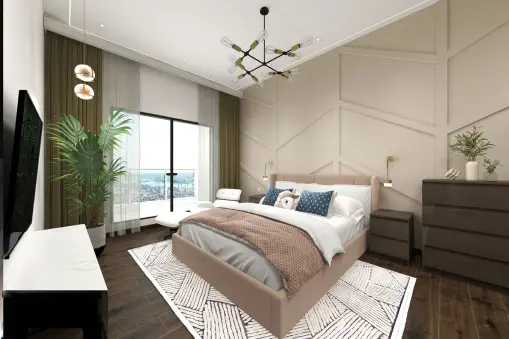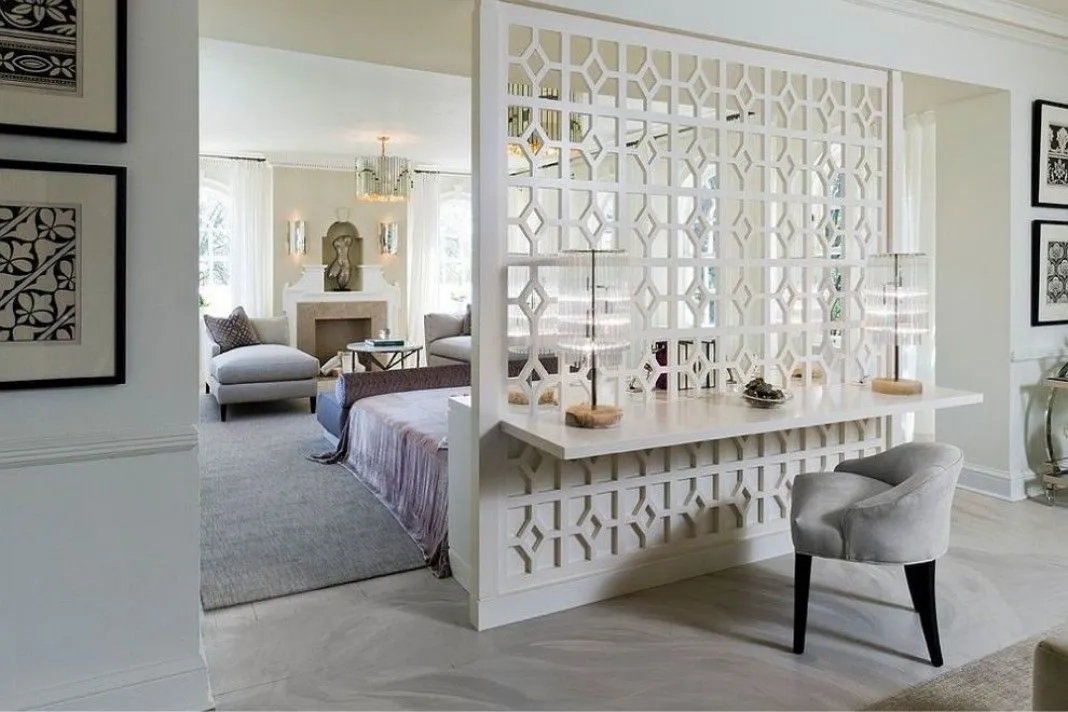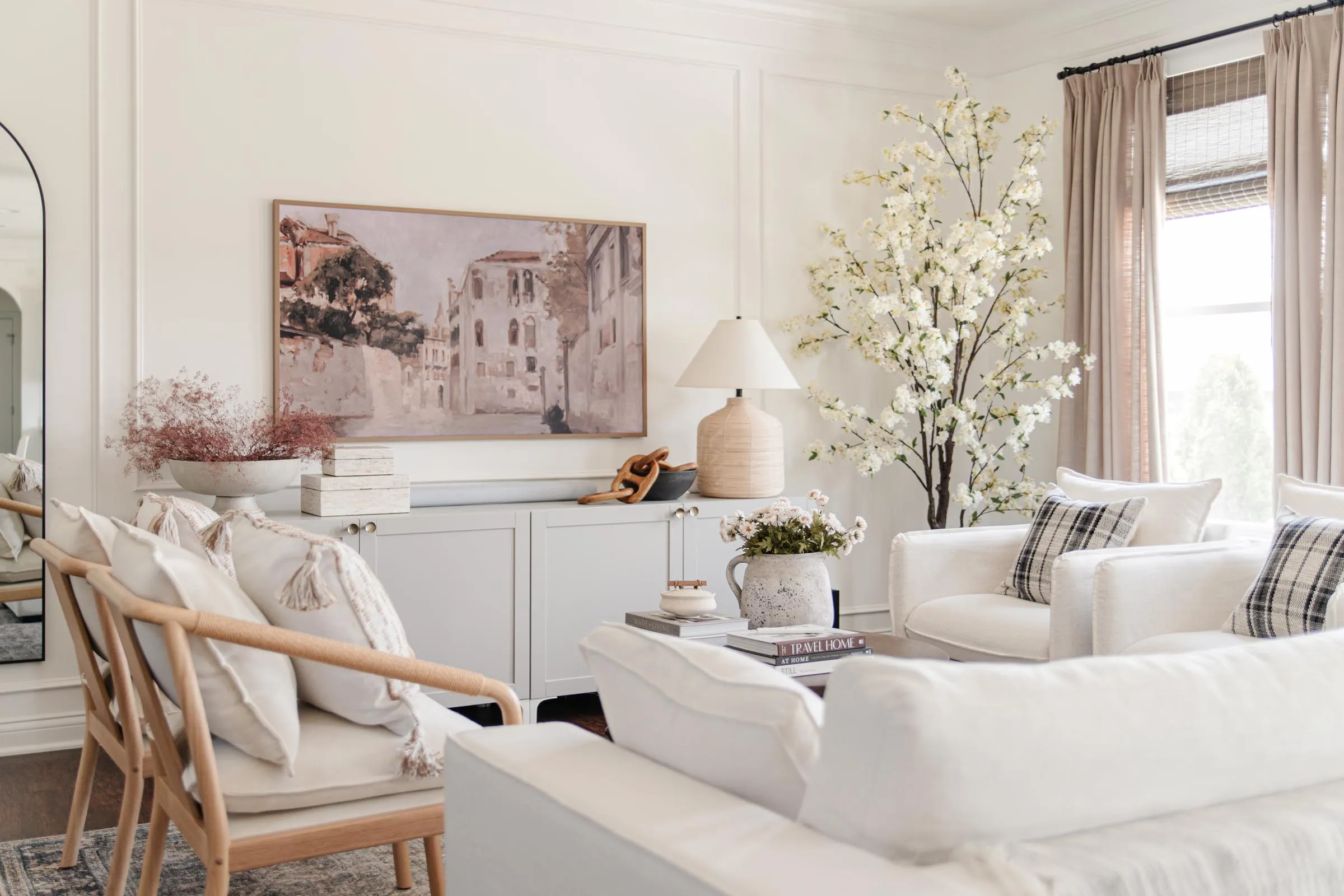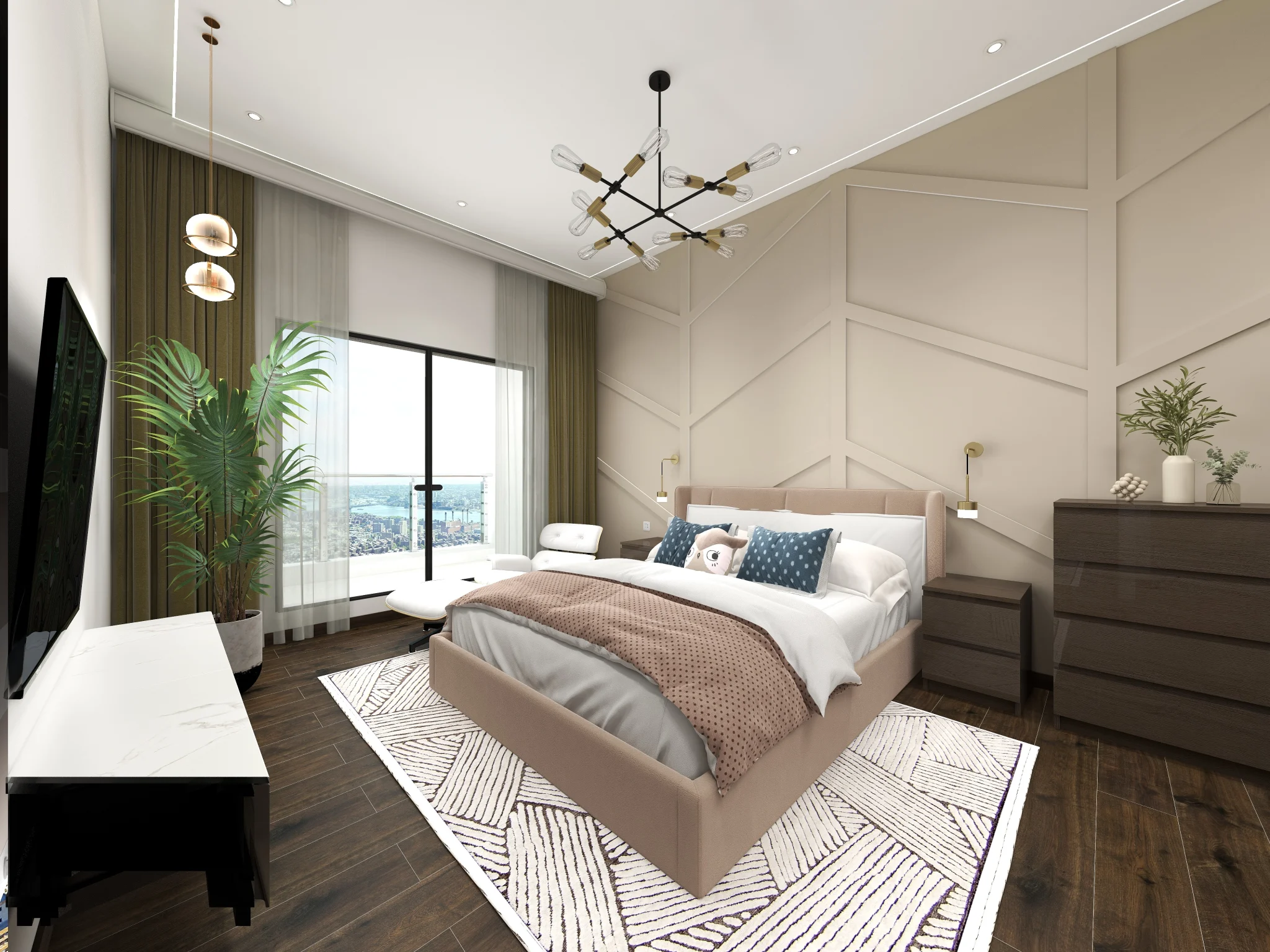What’s the first thing that comes to mind when you think about making your home the dream place you’ve always wanted? Is it the best kitchen for having people over? Or maybe a cozy sitting room where you can unwind after a long day? When many people want to remodel their home, they want to make it feel like an extension of their personality and way of life. But how do you begin? How can you make the best plans for your makeover without getting too stressed out? It’s not enough to just make the house look nice when you’re renovating it; you need to plan it so that it meets your specific needs. The process can be exciting and stressful at times. Planning is the first thing you need to do to make your idea come true.
We’ll show you the most important steps you need to take to plan and build the perfect villa renovation in this guide. These tips will help you make a plan that’s useful, beautiful, and uniquely yours, whether you want to add on to your home, update your kitchen, or make your yard into a haven.
1. Figuring out what you need for your renovation
Setting clear goals for the renovation is one of the most important first steps in any villa improvement. What do you really want this improvement to do for you? Do you need more space because your family is huge? Or do you want to bring a tired design up to date and add more current features? Top interior design companies in Dubai can help you figure out what you want—whether it’s a bigger kitchen, a home office, or ways to save energy—to plan your renovation job accurately.
It’s also important to think about your cash. It can be expensive to do renovations, and they often end up costing more than planned. Labor, materials, and permits can add up quickly, and it’s simple to think that your makeover will cost less than you think it will. People often get so excited about the possible changes that they lose sight of the final design, which can lead to making bad decisions and making a lot of them.
This can happen if you don’t set clear, attainable goals from the start. Talk to a renovation expert. They can give you accurate cost estimates and help you understand what your whole job will entail. Get a better idea of what you want by looking at mood boards and other designs. Make sure that everyone involved knows what you want to achieve.
Main Points:
Make your wants and goals very clear before you start.
For accurate cost estimates, talk to experts.
Mood boards and other visual tools can help you bring your ideas to life.
2. Making a Budget That You Can Afford
Budgeting is very important when it comes to fixing up a house. A detailed budget will help you make choices and keep you from getting expensive surprises. There are many costs that come with renovations, such as the building itself, the plan, the materials, and the permits. On top of these expected costs, there are also costs that homeowners don’t think about, like repairs to the structure that come up out of the blue or changes to the design made in the middle of the job.
It’s easy to underestimate how much something will cost, so budget overruns happen a lot. It’s especially important to remember this when working with contractors whose prices may change later. People who own their own homes are often surprised by how much materials cost, and they don’t always make the most important upgrades, which can make the room less useful.
Setting up a specific budget with a 10–20% cushion for unexpected costs will keep this from happening. Don’t be afraid to get quotes from more than one provider to make sure you’re getting the best deal. Prioritize upgrades that are necessary, like plumbing or electricity work, before you focus on upgrades that are nice to look at.
Main Points:
Make an accurate budget that includes extra money for unplanned costs.
To avoid price differences, get quotes from more than one provider.
Set aside extra money in case of unexpected costs.
3. Spending money on the right experts
The team you hire has a lot to do with how well your villa makeover goes. This group includes architects, designers, contractors, and engineers, all of whom are very important to making your idea come true. However, there’s more to finding the right people than just reading their resumes. It’s about getting people who can talk to you clearly and understand what you need.
Miscommunication is a problem that often happens during renovations. This can cause problems with the planning, delays, and cost overruns. Professionals don’t always have the experience they need to handle a certain part of a job, which can make things even more difficult. Also, don’t forget the delays that come from contractors who aren’t trusted and don’t show up on time.
To avoid these problems, you should take the time to study and talk to potential candidates in depth. Look at their portfolios, call their contacts, and read what other clients have said about them. Make sure everyone knows what to expect from the start and that there is open contact throughout the whole process. Your makeover is more likely to go well if everyone is on the same page.
Main Points:
Do a lot of research and careful interviews with possible professionals.
To make sure the job is good, check the references and portfolios.
Make sure everyone knows what to expect and keep the lines of conversation open throughout the process.
4. How to Choose the Style and Layout of Your Villa
It’s important to find a balance between how your villa looks and how it works when choosing its style and plan. No matter if you like a modern, simple style or a more classic one, the style you pick should go with the architecture of your home. If your house has classic features, you’ll want to make sure that your renovation brings out those features instead of making them look bad.
Another important thing to think about is the layout. Modern homes often have open floor plans, but they might not work for every house. You should think about what you’ll do in each room and make sure the place is set up for comfort and flow. Not planning your room well can cause problems like too many people, wasted space, or awkward layouts that are hard to live with.
Talk to your architect or designer to make sure that the layout of your villa works well and fits with the general style. Stay true to the villa’s original style while adding new features that fit your way of life.
Main Points:
Pick a design style that goes well with the architecture of your home.
When planning your layout, put utility and flow first.
Work closely with professionals to keep things in balance and unity.
5. Picking Out Finishes and Materials
The materials you pick for your renovation can have a big effect on how your home looks and feels as a whole. Not only do they add to the look, but they also change how things work. Materials that last a long time and use little energy are great for both looks and function. Think about the weather where you live and how the materials you pick will hold up over time.
The right balance of luxury and usefulness is also important. High-end tables and flooring materials, for instance, should look great but also be easy to clean. There are materials that are hard to clean, and you don’t want surfaces that need to be cleaned all the time.
Talk to your creator about how to maintain and replace different materials over time. Pick ones that go with both current styles and the classic features of the villa. Also, keep track of how much the materials cost so that there are no price shocks during the makeover.
Main Points:
Choose materials that will last and will work well in your area’s temperature.
You should choose things that are both luxurious and useful.
Keep track of how much things cost and look at different sources.
6. Adding technologies for smart homes
By adding smart home technologies to your house, you can make it more useful. Your villa can be more comfortable, safe, energy-efficient, and convenient if you set up the right methods. Imagine being able to use your phone to handle your home’s lights, heat, and security systems, even when you’re away on vacation. Smart home technology is becoming more and more popular as a way to improve homes because it offers so much ease and peace of mind.
But there are some problems to think about. Systems that are too hard to use or too complicated can be frustrating or overwhelming. There may be problems with how well smart technologies work with current systems, and putting them together can be harder and cost more than planned.
Smart technologies that really make your daily life better should be your top priority. Make sure they work with the infrastructure of your house and plan your budget so that these systems can be easily added to the renovation.
Main Points:
Smart tools that make life better and are easy to use should get your attention.
Make sure it works with the infrastructure of your house.
Plan your budget so that smart systems can be added to the renovations.
7. Getting permits and thinking about the law
It’s important to know the local building and zoning rules before you start your renovation. Some repairs, like adding on to or changing the structure, may need permits. Not getting the right permits can lead to fines or delays that will make your schedule and budget less flexible. It is necessary to follow fire safety, electrical, and building rules.
A lot of people don’t think about how important permits are because they think they aren’t needed. When the police get involved, this can cause problems that were not expected.
Find out what permits you need for your job and work with professionals who know the rules in your area. Before building starts, make sure that all the necessary paperwork is turned in. This will keep things on track and avoid any delays.
Main Points:
Find out about the building rules and permits in your area before you start.
Work with professionals who know the rules in your area.
Make sure you file all the appropriate paperwork as soon as possible.
8. Keeping track of the renovation schedule
For a villa renovation to go well, you need to set a reasonable deadline. Renovation jobs usually have more than one step, such as planning, tearing down, building, and finishing. Each step comes with its own problems and possible delays. Making a schedule will help you stay on top of things and keep the job from taking longer than it needs to.
But there are often delays that are out of our control. Bad weather, a lack of materials, or problems with workers can throw off the schedule you carefully made. Delays can also happen when different deals and teams don’t work together well.
To keep everyone on track, make a project plan with steps, due dates, and goals. Set aside extra time in case there are delays, and make sure you stay in touch with your project manager and workers. This proactive method will help make sure everything goes well.
Main Points:
For each part of the makeover, set clear goals and due dates.
Allow extra time in case something goes wrong.
Always stay in touch with project managers and workers.
9. Making your design come to life
When putting your idea into action, it’s important to find a balance between how it looks and how it works. Each room should show off your personal style while still being useful for everyday tasks. Add unique touches to your house that make it feel like home, but don’t go overboard with design choices that might not go with each other.
Keep things the same. During the renovations, it’s easy to get sidetracked, but it’s important to keep the style of the whole villa consistent. Check your design ideas often to make sure you’re still on track. Stay true to your original idea, but be willing to make small changes when they’re needed.
Main Points:
In every room, find a balance between style and utility.
Make sure that the remodeling is consistent from start to finish.
Follow your original plan for the design, but be ready to make changes if they become necessary.
10. Finishing touches and things to think about after the renovation
With a few finishing touches, your remodeled cottage can go from being a house to a home. These little things, like picking out the right furniture, fabrics, and outdoor features, are big parts of making your home feel warm and unique.
Even though the inside is important, don’t forget about the outside. The landscaping, pathways, and other outdoor areas are just as important as the rooms inside. After the renovation, the house needs to be properly maintained to make sure it stays in great shape for years to come.
Find decorations that go with the rooms you’ve just fixed up, and make sure the outside looks as good as the inside. A maintenance plan will help you keep the new look of your villa for a long time after the job is done.
Main Points:
To make your home your own, add finishing touches like furniture and decorations.
Don’t forget to improve the outside too.
Set up a plan for long-term care.
In conclusion
One of the most satisfying things to do is to renovate your house and make it into a home that fits your lifestyle and tastes perfectly. You can avoid common mistakes and make a place that is beautiful, useful, and comfortable if you plan it out well and pay attention to the little things. Define your goals carefully, hire the right experts, make a budget that you can stick to, and carry out your plan one step at a time. In no time, your villa will be more than just a house; it will be the home of your dreams.
FAQs
How long does it usually take to fix up a villa?
How long it takes depends on how big the repair is. It might take a few months to make small changes, but it could take six months to a year or more to do major improvements.
What can I do to make sure my makeover doesn’t go over my budget?
Start with a specific budget and leave some room for costs that come up out of the blue. Review your buying often and only make upgrades that are truly necessary.
What should I focus on when I’m remodeling my villa?
Prioritize updates that improve structural integrity, usefulness, and energy efficiency first. Then, add design features that fit your style and way of life.
What should I do to find the best workers for my project?
Carefully look into contractors, call their references, read reviews, and make sure they’ve worked on jobs like yours before. Keep the lines of contact open during the whole process.
